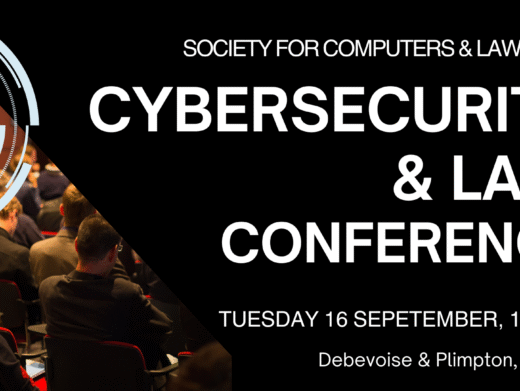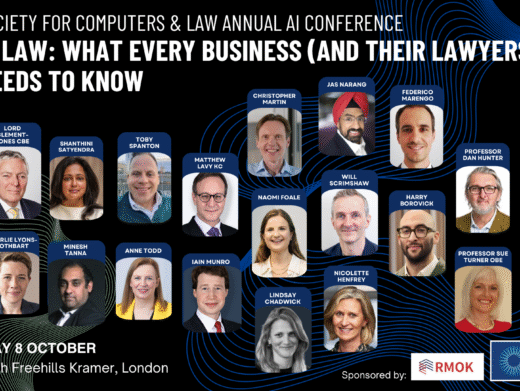Following high-profile injunctions awarded last year against the major ISPs requiring them to block access to peer-to-peer (P2P) file sharing sites Newzbin2 and The Pirate Bay, in a new site blocking decision delivered on 16 July 2013 regarding the FirstRow web site, the High Court confirmed that sites which provide access to copyright works through third party indexed links infringe rightsholders’ copyright by communicating the works to the public. See Football Association Premier League v British Sky Broadcasting Ltd [2013] EWHC 2058 (Ch).
FirstRow is an indexing and aggregation portal. A user of the web site is presented with a list of links, organised by sport and time of day. Upon clicking on a link, the user is taken to a new page which features a ‘frame’ in which a stream of a television broadcast of a sporting event appears accompanied by advertising.
The High Court confirmed that the operators of FirstRow infringed FAPL’s copyright by communicating copyright works to the public (or in the alternative by acting as joint tortfeasors with the parties that provide the links).
Background
FirstRow is a web site that serves as an index and portal to facilitate access to streams of televised sporting events. On FAPL’s evidence, the web site is extremely popular, with 9.98 million unique users in April 2013 and indicative annual advertising revenues of between £5.3m and £9.5m. Users of the web site are able to stream a wide range of live sports including Premier League football matches.
The streams are supplied by third parties. Firstly, the third party streamer digitally captures a broadcast of a live sports event on his or her computer. Secondly, the streamer sends the captured images in real time to the server of a user generated content (UGC) site. Thirdly, the streamer creates an ’embed code’ through the UGC site which allows the stream to be embedded into other web sites. Fourthly, the streamer submits the embed code to FirstRow and, if accepted, the stream will be indexed as a link on the FirstRow web site. Fifthly, a user can watch the stream by clicking on the link. Mr Justice Arnold noted three key points from the process: (i) it is likely that FirstRow only accepts embed codes from trusted streamers; (ii) none of the streams are provided by an official source; and (iii) FirstRow does not itself transmit any of the streams; they all emanate from the UGC sites.
The High Court accepted that copyright subsists in the following FAPL works in relation to live Premier League matches: action replays, the recorded ‘World Feed’, the Premier League and Barclays logos and on-screen graphics.
FAPL sought a web site blocking order on terms agreed with the defendant ISPs, which between them serve 94% of UK Internet users. FAPL was supported in its application by a number of other sports organisations whose content was also indexed on the site.
FirstRow did not appear in the case.
Copyright infringement
FAPL contended that the operators of FirstRow infringed its copyright in two ways: (i) by communicating the works to the public within the meaning of the Copyright, Designs and Patents Act 1988, s 20 or by acting as joint tortfeasors with the operators of the UGC sites; and (ii) by authorising the infringing behaviour of users of the FirstRow web site.
Mr Justice Arnold’s judgment in EMI Records Ltd & Ors v British Sky Broadcasting Ltd & Ors [2013] EWHC 379 (Ch) was used as the basis for his deliberation regarding whether there had been an unlawful communication to the public. He considered three issues: (i) was there communication by electronic transmission; (ii) whether communication had to be to a new public; and (iii) the extent to which the act of communication took place in the UK.
Is there a communication of works by electronic transmission?
In the CJEU judgement in ITV Broadcasting Ltd v TVCatchup Ltd [2013] EUECJ 607/11 it was held that a retransmission of a terrestrial television broadcast via the Internet will constitute a communication because it involves ‘…a specific technical means different from that of the original communication’ and an ‘…intervention… which is different from that of the original broadcasting organisation concerned’. The only recognised exception to this is where technical means are used for the purpose of maintaining or improving the quality of the reception of the original transmission. The exception was not applicable in this case. Accordingly, the High Court was satisfied that there was a communication of marks by electronic transmission on this case. The High Court then considered whether the operators of FirstRow should be made responsible for the third-party streams. Mr Justice Arnold said that in aggregating a large number of streams from a variety of streamers, indexing the streams for user convenience, and providing for use of a simple click-through mechanism to access each stream, the operators were responsible for such communication. In the alternative, Mr Justice Arnold considered that FirstRow was jointly liable for the communication by the UGC sites.
Communication to a new public
The High Court noted that following the CJEU reference in TVCatchup, where television signals were retransmitted over the Internet, there is no requirement for such transmission to be to a ‘new public’. The fact that there was a separate communication to the public by a different technical means sufficed.
Does the act of communication to the public take place in the UK?
FAPL submitted evidence to demonstrate that FirstRow targeted a UK audience which included reference to the language of the web site, the location of companies whose advertisements appeared on the site and the levels of traffic generated by UK users. Mr Justice Arnold accepted this evidence and accordingly found that the act of communication takes place in the UK.
FAPL also asked the court to consider whether users of FirstRow, and of particular concern pubs, were communicating works to the public. Mr Justice Arnold considered that pubs showing Premier League matches via the FirstRow web site were communicating the copyright works to the public. However, Mr Justice Arnold doubted whether the operators of FirstRow authorised such use of the web site by publicans. The High Court did not consider the question of authorisation in great detail as it was deemed unnecessary to reach a conclusion given the finding on this point that FirstRow was itself unlawfully communicating the marks to the public.
Proportionality
In order to grant a s 97A injunction, the High Court must be satisfied that the order sought is proportionate. Mr Justice Arnold concluded that the order was proportionate for the following reasons:
1. The defendant ISPs did not oppose the making of the orders and the terms of the orders have been agreed between FAPL and the defendants.
2. The orders are necessary to protect the copyright of FAPL and the supporting sports rights-holders, which were being infringed on a large scale. Given the difficulty of identifying, let alone bringing proceedings against the operators of the web site, no other remedy was open to FAPL.
3. The orders were necessary, or at least desirable, in order to protect the sporting objectives which lie behind the Saturday afternoon period during which the broadcasting of Premier League matches is prohibited in order to encourage attendance at football matches.
4. The vast bulk of the content on the web site which is likely to be of interest to UK users infringed the rights of FAPL and the supporting rights-holders.
5. The orders were narrow and targeted ones, and they contain safeguards in the event of any change in circumstances.
Finally, the High Court considered that the interests of FAPL and the supporting right holders in enforcing their copyrights outweighed the Article 11 EU Charter right of web site operators which are profiting from infringement and of the web site users who can obtain the copyright works from lawful sources.
Final thoughts
Section 20(2)(b) of the CDPA provides two examples of communication to the public by electronic transmission: (i) broadcast and (ii) on-demand. The on-demand right relates to allowing members of the public to access a work from a place and at a time individually chosen by them. Curiously, in his judgment (at [38]), Mr Justice Arnold considered that FirstRow infringed FAPL’s on-demand right. This broad application seems to be a stretch given that a user is only able to watch sports events ‘as live’. The site does not allow users to watch sports events in their entirety at a time of their choosing. That said, whilst FirstRow might not have been engaging in either broadcasting or making works available on-demand, it is clear that it was communicating the works to the public. It is important to note that s 20 includes broadcast and on-demand as non-exhaustive examples of an authors’ exclusive communication to the public right. Accordingly, making the works available by electronic transmission would, we consider, suffice without the additional requirement of this having to be provided in such a way that the user is able to access the works at a time of their choosing.
Separately, it is also worth noting the UK High Court’s confidence in the application of an author’s s 20(2) right. Whilst the InfoSoc Directive, from which the provision derives, does not define the concept of ‘communication’, it is clear from recital 23 that it ought to be understood in a broad sense. Mr Justice Arnold’s finding that FirstRow was engaged in its own communication of copyright works suggests that post the CJEU decision in TVCatchup the High Court is willing to interpret the communication right in a broad sense.
Nick Swimer is a Partner in Reed Smith’s Media and Technology Team and was previously the Head of Legal for Governance, Regulatory and Trading and the Corporation Secretary at Channel 4.
Stephen Edwards is also a Partner at Reed Smith.




